The ‘Bloody Sunday’ massacre in Northern Ireland
- Share via
An ex-soldier was arrested more than 40 years after the “Bloody Sunday” killings in Northern Ireland that resulted in the deaths of 14 people.
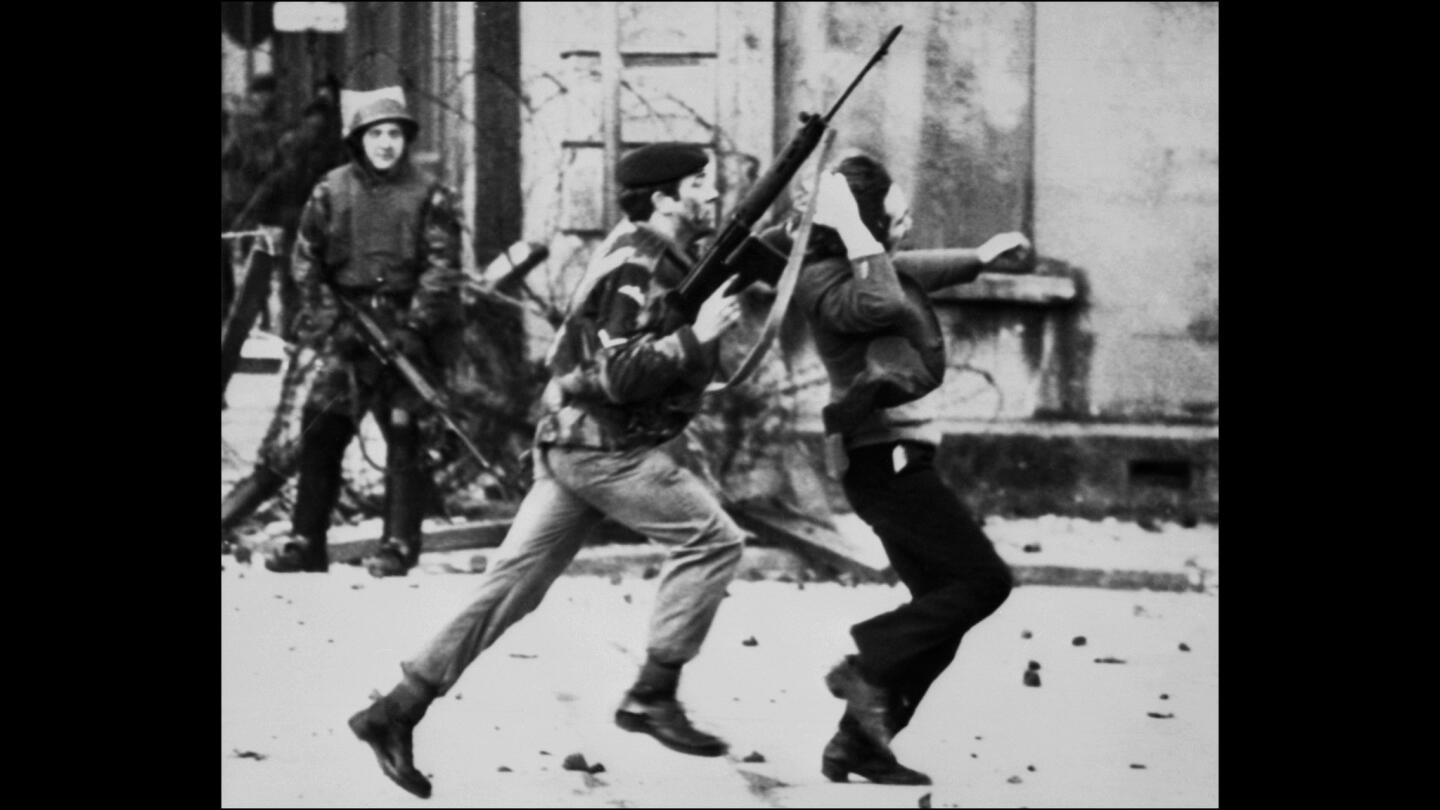
A British soldier drags a protester during a march, later known as “Bloody Sunday,” in Londonderry, Northern Ireland.
(Thopson / AFP/Getty Images)An ex-soldier was arrested more than 40 years after the “Bloody Sunday” killings in Northern Ireland that resulted in the deaths of 14 people.
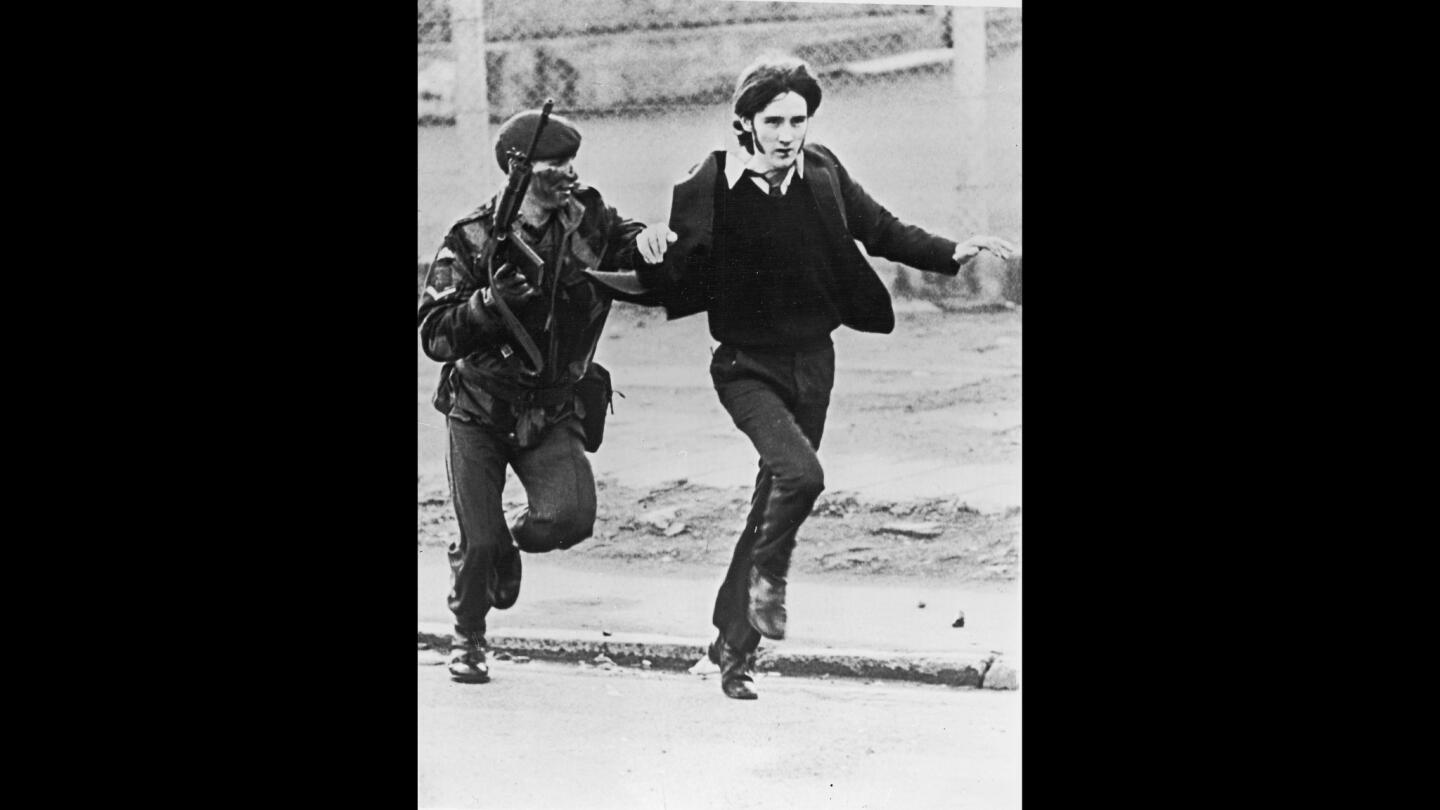
A British paratrooper takes a youth into custody on “Bloody Sunday,” when the British military opened fire on marchers in Northern Ireland in 1972.
(Getty Images / Getty Images)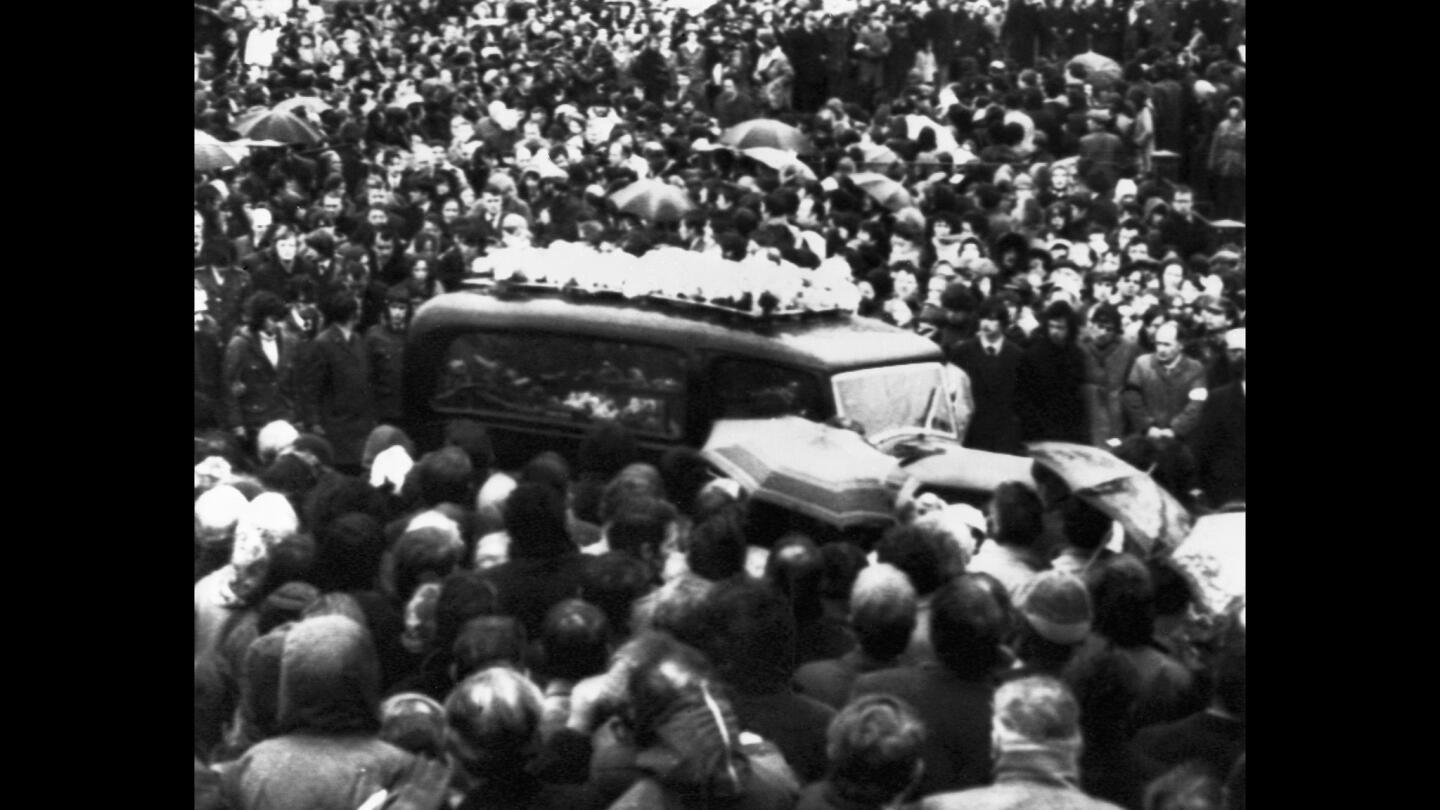
Mourners attend a funeral for the 13 people killed on “Bloody Sunday” in Londonderry, Northern Ireland. Another victim died months later.
(AFP/Getty Images)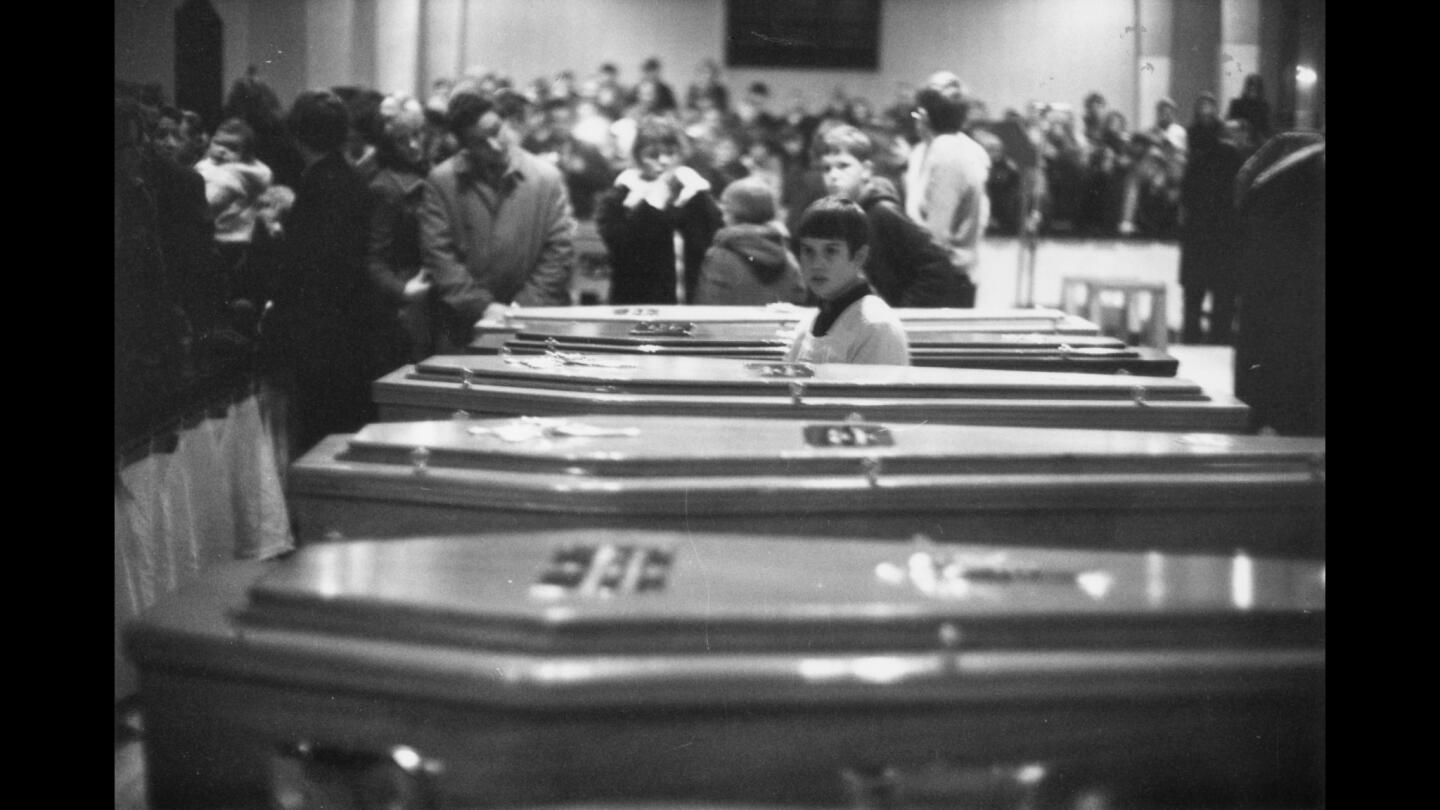
Coffins of 13 civilians shot dead by British forces on “Bloody Sunday” are lined up for the funeral at St. Mary’s church in Londonderry, Northern Ireland.
(M. Stroud / Getty Images)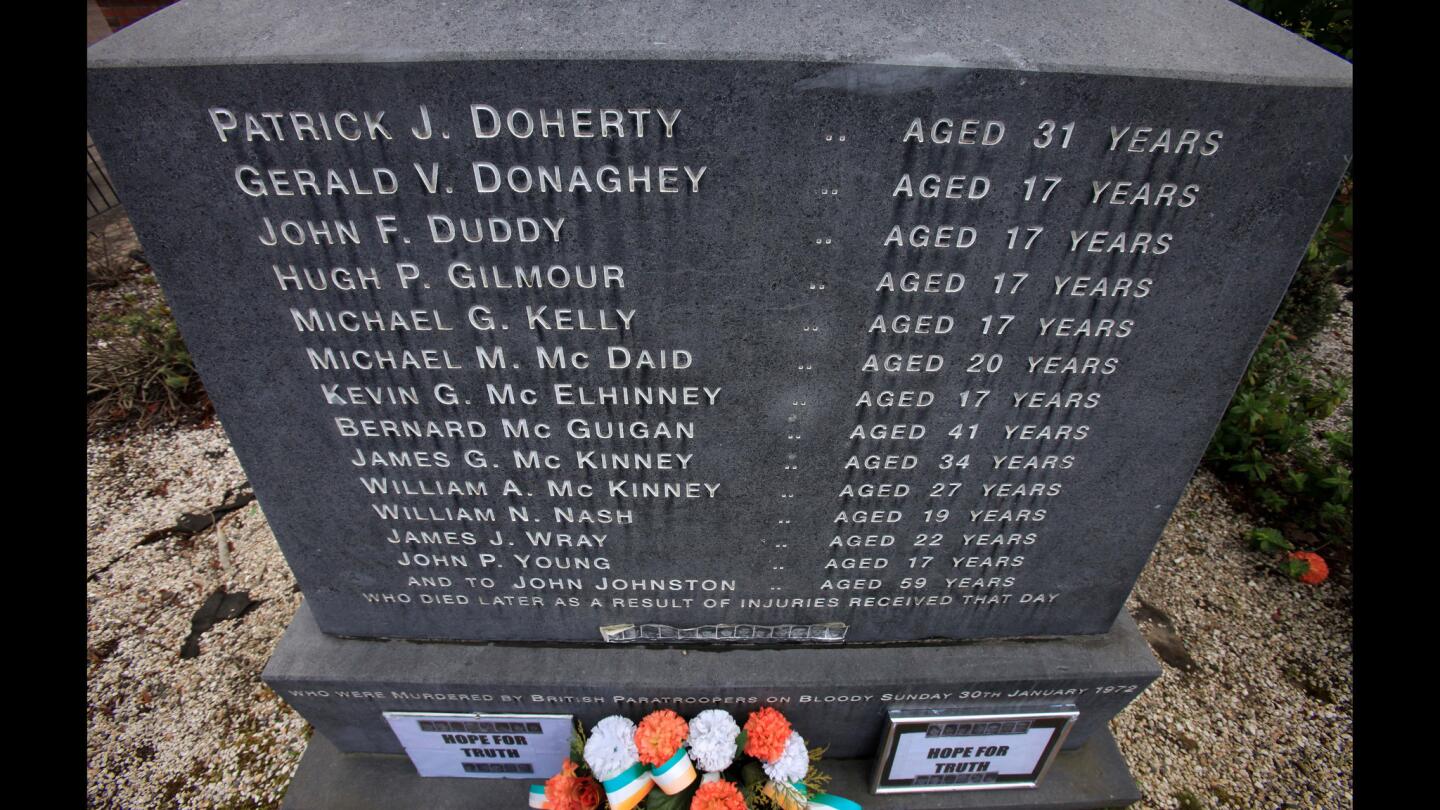
A memorial in Londonderry, Northern Ireland, bears the names of the 13 people killed during the “Bloody Sunday” massacre on Jan. 30, 1972, and another victim who died later of injuries sustained that day.
(Peter Muhly / AFP/Getty Images)